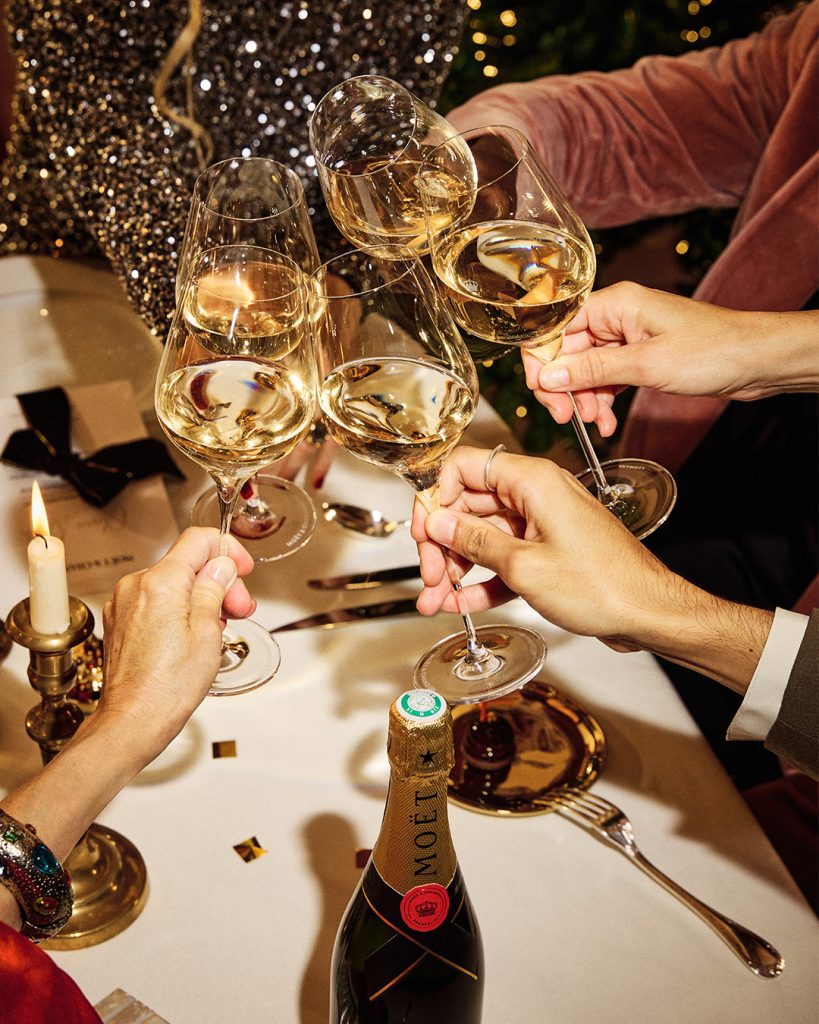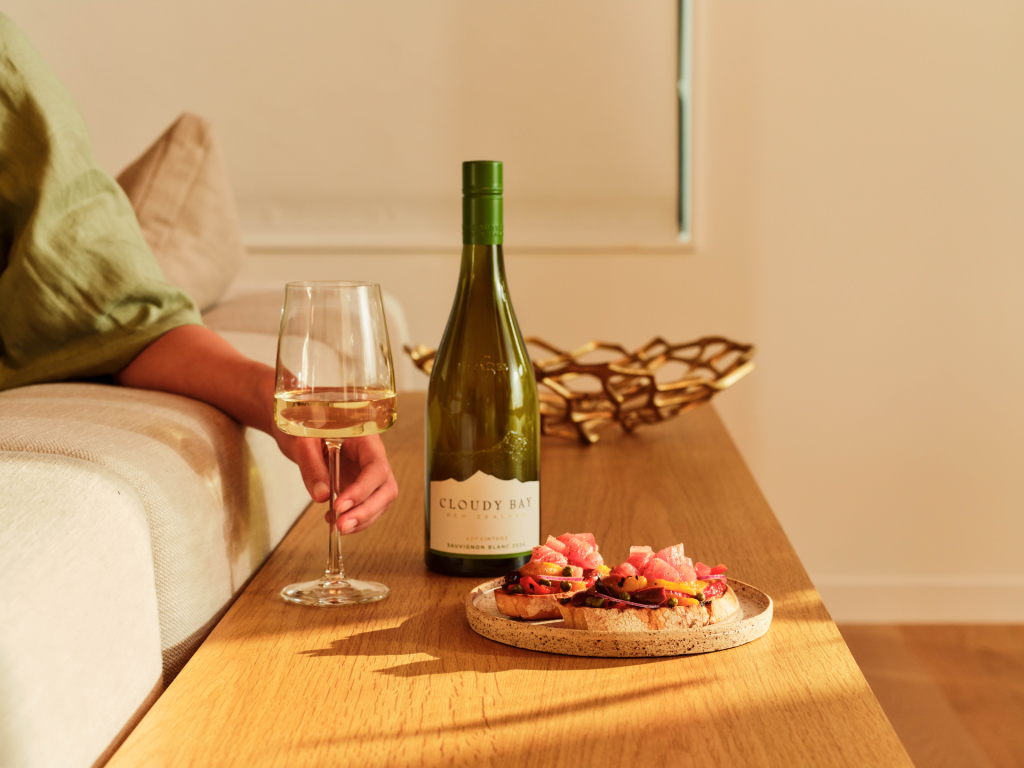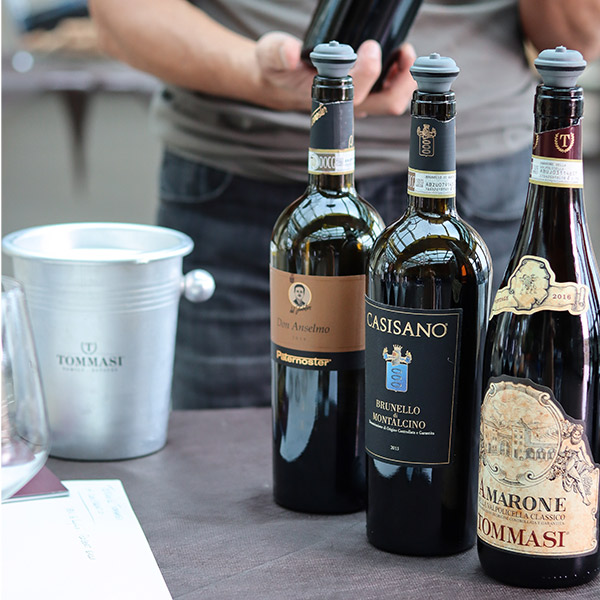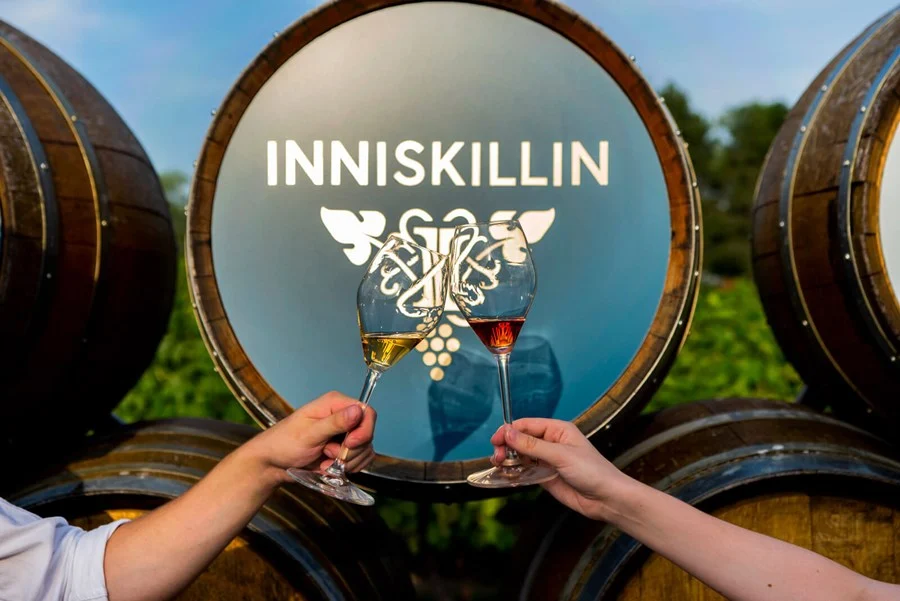We’re heading into the holiday entertaining season. Whether you’re hosting an intimate dinner party or an informal potluck, choosing the right wines can elevate your evening.
Who better to help us than our favourite drinks expert Natalie MacLean, editor Canada’s largest wine review site at nataliemaclean.com.
Welcome, Natalie.
Great to be back with you! The holiday season is the Super Bowl of wine because everyone gathers around, I provide running commentary that no one asked for but they tolerate because I brought five bottles of wine.
Let’s start with something bubbly! What do you recommend?
We’re kicking things off with the classic Champagne that’s been toasting celebrations since 1743, Moët & Chandon. This Champagne was once reserved for royalty, and it still tastes regal today. It’s holiday sparkle in your glass.
Moët & Chandon Champagne
France
Feel free to try the Moët & Chandon. This sparkling wine is all about elegance and celebration. You’ll find delicate notes of white stone fruit like peach and nectarine, hints of freshly baked bread, and a lovely citrus brightness that dances on your palate with those persistent, fine bubbles.

Before we move on to the next wine, let’s play a quick game! True or False: Champagne bubbles rise faster in a tall flute than a wide glass?
I’m going to say… True?
Absolutely correct! A flute concentrates the stream so the bubbles travel with more energy. It also keeps the wine fresher for longer. That said, I prefer a white wine glass for bubbles as I still love to swirl and smell it as I do still wine.
I know this makes me look like I’m trying too hard at parties, but I’ve made peace with it. I’m also the gal who brings her own glassware, so we’re well past subtle at this point.
I’d pair this with:
- butter-basted roasted turkey with golden, crackling skin that releases aromatic steam when you carve it, the meat tender and juicy beneath its herb-flecked exterior.
- chilled oysters on the half shell nestled in crushed ice, their briny liquor glistening, with a squeeze of fresh lemon that mingles with the ocean’s essence.
- aged parmesan shards broken into craggy pieces, their crystalline texture providing satisfying crunch and deep, nutty umami that amplifies the champagne’s complexity.
- crispy fried chicken with a shattering crust seasoned with paprika and garlic, the contrast of the rich, hot meat against cold champagne creating pure magic.
- salted caramel truffles with their smooth, glossy exteriors giving way to molten centers that balance sweet and savory in perfect harmony with the wine’s fruit and acidity.
Every single pairing sounds like something I’d attempt to make and then order takeout halfway through.
That’s the beauty of these suggestions. They’re aspirational. Like vision boards, but edible.
What’s the next wine?
Cloudy Bay Sauvignon Blanc put New Zealand on the wine map forty years ago and brought worldwide attention to the country’s wines.
It’s that good and remains the gold standard for fresh Sauvignon Blanc today. This wine is so famous, its Instagram account has better engagement than mine.
Cloudy Bay Sauvignon Blanc
Marlborough, New Zealand
Feel free to try the Cloudy Bay. It’s bursting with aromas of ripe honeydew melon, passionfruit, and lemongrass which makes it not only a great gift wine but also a wonderful match for turkey and stuffing.

Quick multiple choice. What gives Sauvignon Blanc its signature herbal aroma?
A: Oak barrels
B: Flavour compounds in the grape skins
C: New Zealand climate and winemaking magic
The answer is B, though if you said C, I respect your optimism. Natural flavour compounds in the grape skins give the variety those fresh herbal notes.
I’d pair this with:
- herb-crusted rack of lamb with a crackly crust of minced rosemary, thyme and garlic, the pink meat releasing fragrant juices that pool with the wine’s bright acidity.
- pan-seared scallops with golden caramelized exteriors and tender, sweet centers served over a citrus beurre blanc that echoes the wine’s zesty character.
- fresh goat cheese crostini topped with honey-drizzled chèvre, its tangy creaminess melting into warm, crispy bread with a whisper of thyme.
- grilled asparagus bundles wrapped in prosciutto, the vegetables still crisp-tender with smoky char marks and the ham providing salty contrast.
- Thai green curry with chicken swimming in aromatic coconut broth studded with bamboo shoots, basil and lime leaves that mirror the wine’s exotic fruit notes.
What about something red for the main course?
Perfect timing! Let me introduce you to Tommasi Ripasso from Valpolicella, Italy. This wine uses a fascinating technique called ripasso, where the wine is re-passed over the dried grape skins left from making Amarone, another terrific Italian red wine.
It’s like giving the wine a second education, a master’s degree, adding richness and complexity.
Tommasi Ripasso
Valpolicella, Italy
Feel free to try the Tommasi Ripasso. This wine is a beautiful deep ruby color with aromas of black cherry, dried fig, and hints of dark chocolate and espresso. On the palate, it’s velvety and smooth with soft tannins and a long, warming finish perfect for holiday evenings.

True or false: Ripasso was originally invented to avoid wasting the leftover grape skins from making Amarone.
True. Italians are masters of zero waste in the cellar. They were upcycling before it was cool.
Now this rich wine needs equally substantial pairings. I’d pair this with:
- slow-braised short ribs that fall apart at the touch of a fork, their mahogany glaze glistening, surrounded by roasted root vegetables caramelized to concentrated sweetness.
- mushroom risotto with porcini and shiitake creating earthy depth in the creamy arborio rice, each spoonful releasing steam infused with truffle oil and parmesan.
- aged Manchego cheese with its firm texture breaking into nutty, slightly sharp bites that complement the wine’s dried fruit character perfectly.
- osso buco with fork-tender veal shanks nestled in rich tomato sauce studded with orange zest, the marrow adding luxurious richness.
- dark chocolate torte with a dense, fudgy center and a thin crisp top, garnished with espresso-spiked whipped cream that echoes the wine’s coffee notes.
And our final wine?
I’ve saved a Canadian treasure for last! Inniskillin Reserve Cabernet Franc from Niagara.
Started in 1975, Inniskillin is Canada’s first estate winery awarded a license after prohibition. It put Canadian wine on the world stage when they won the Grand Prix d’Honneur at Vinexpo in 1991 for their Icewine.
This Reserve Cabernet Franc is crafted in small batches, with grapes that are hand-selected by the winemaker to create exceptional, elegant and refined wines.
Inniskillin Reserve Cabernet Franc
Niagara Peninsula, Canada
Feel free to smell or taste the Inniskillin Reserve Cabernet Franc. This wine offers beautiful aromatics of red raspberry, violet, plum, raspberry, and floral notes complement the rich flavours of black cherry and spice. Smooth, approachable tannins and an extended finish.
It has a silky texture with bright acidity and notes of black pepper and fresh herbs. It’s elegant yet structured, showing the cool-climate character that makes Niagara Cabernet Franc so special.

Here’s our final game moment. Multiple choice. What is Cabernet Franc best known for contributing to Bordeaux blends?
A: Colour
B: Freshness and aromatic lift
C: Tannins that are stronger than my willpower at the dessert table
Natalie: The answer is B. Cab Franc adds brightness that keeps big blends from feeling too heavy.
I’d pair this with:
- herb-roasted prime rib with a peppercorn crust that forms a spicy, crackling bark over the tender, pink interior, served au jus for dipping each slice.
- mushroom tart with caramelized onions and gruyère cheese in buttery, flaky pastry, the earthy fungi harmonizing with the wine’s herbal notes.
- grilled lamb chops with mint chimichurri, the charred meat still blushing pink at the center, the bright herb sauce cutting through richness.
- roasted beet and arugula salad with candied walnuts and chèvre, the sweet earthiness of the beets complementing the wine’s red fruit and pepper spice.
- duck confit with crispy, mahogany skin shattering to reveal succulent meat beneath, served with cherry reduction that mirrors the wine’s fruit profile.
Natalie, these suggestions are fantastic! Any final words of wisdom for our viewers?
The perfect bottle is more than a drink; it’s a gesture, a memory, and, often, the start of a great conversation.

Thank you, Natalie! Where can we find you and these wines online?
Online, my website is nataliemaclean.com.
On Instagram, you can find me posting wine reviews and tips at: @NatalieMacLeanWine where I share wine picks and wine mistakes that make me more relatable. There are more of those than I’d planned.
Posted with permission of CTV. Please drink responsibly.











